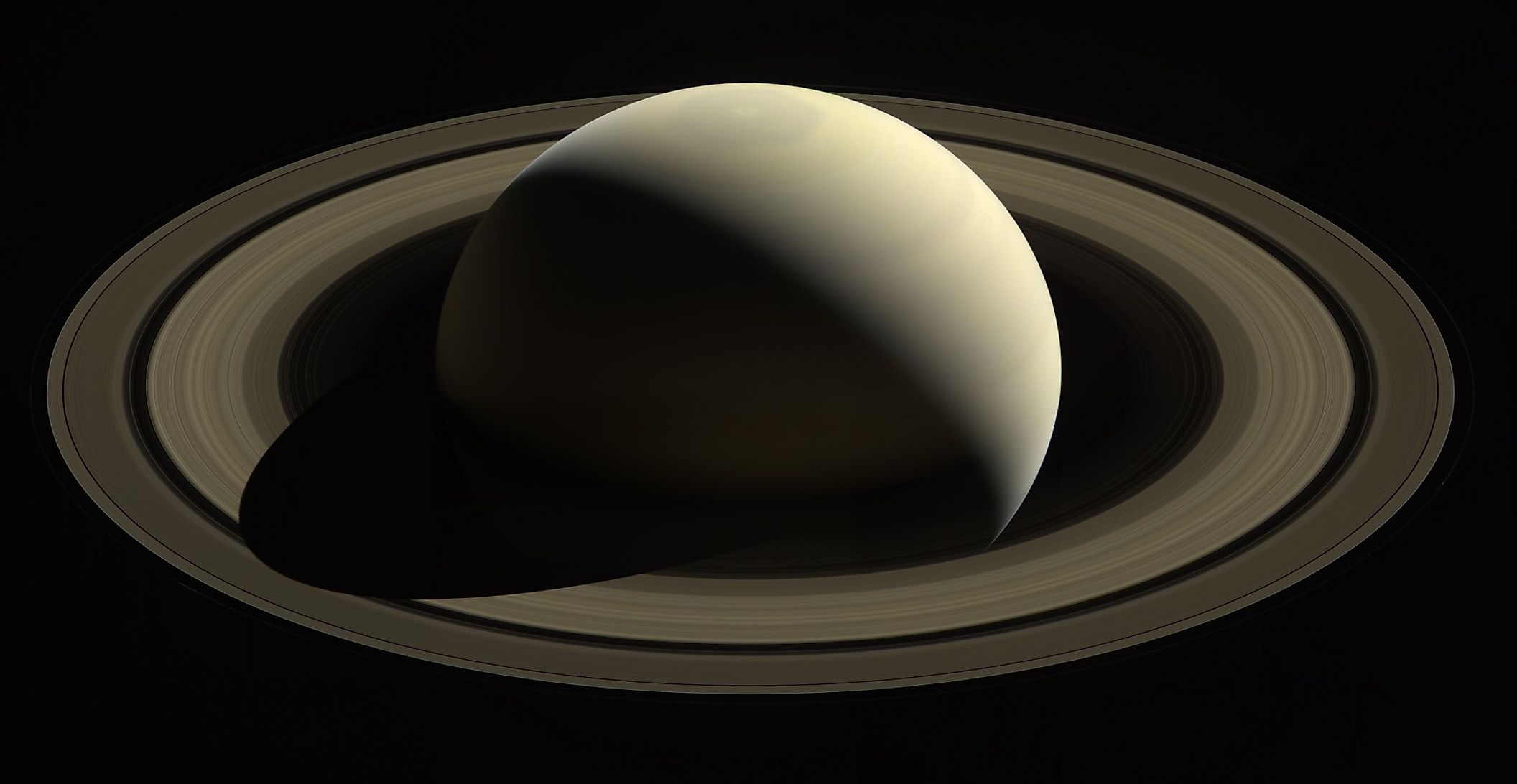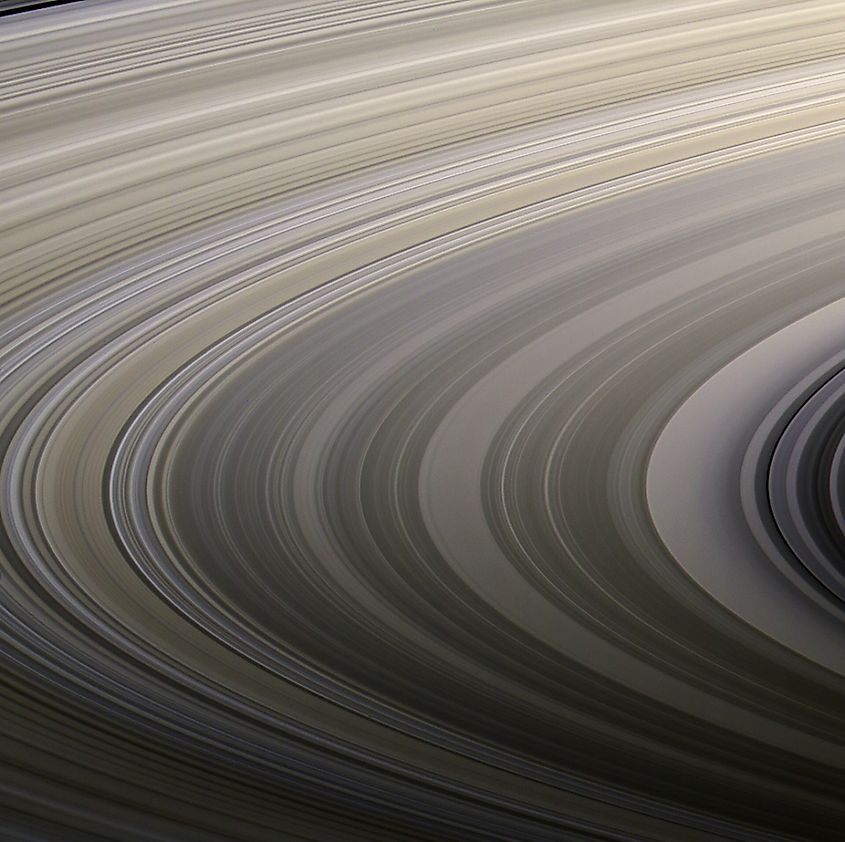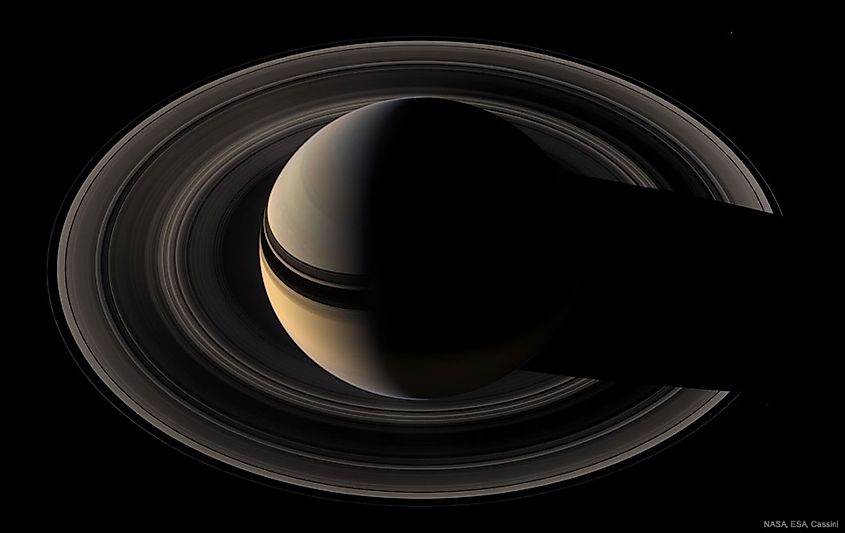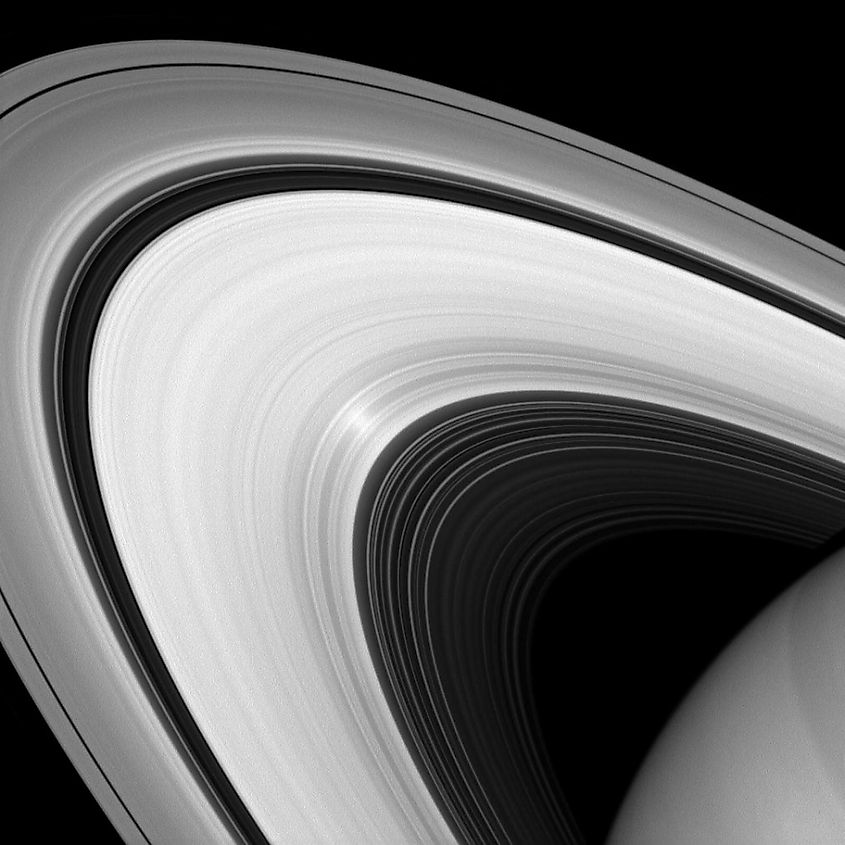
How Did Saturn’s Rings Form?
Saturn’s rings are one of the most stunning sights in our solar system. They are also perhaps the most recognizable feature of Saturn. Ask anyone to say something they know about Saturn, and most will likely answer with the fact that it has rings. Even with a pair of binoculars or a small telescope, one can see the rings of Saturn encircling the giant planet. While the rings are stunning, they are also one of the most mysterious objects in our solar system. One such mystery is the origin of Saturn’s rings.
The Rings of Saturn

When Saturn’s rings were first discovered, most astronomers believed them to be a solid structure. As our understanding of physics advanced, however, scientists realized that if Saturn’s rings were solid, gravitational friction between the rings and Saturn would quickly destroy them. Rather, Saturn’s rings are composed of countless particles that can range from the size of a pebble to the size of a house. These particles are primarily composed of rock and ice, and they form a series of vast rings that encircle Saturn. Interestingly, while Saturn is widely known as the ringed planet, it is not the only planet that has rings. In fact, all of the gas giants, Jupiter, Uranus, and Neptune, all have rings. Saturn’s just happen to be the largest and brightest.
The Roche Limit

The composition of Saturn’s rings are very similar to comets, asteroids, and moons, which suggests that the rings themselves were once an assortment of these objects. Current models predict that the rings formed as a result of comets, asteroids, and moons breaking apart in orbit, with their material falling into orbit and forming a series of rings. How exactly did these objects break apart? Surrounding every planet in our solar system is a region called the Roche limit. The Roche limit is the region around a planet where its gravitational pull becomes so strong that it exceeds the gravitational attraction of any orbiting object. Any object that happens to pass the Roche limit will be ripped apart by the planet’s gravity. In the case of Saturn’s rings, they likely formed after a number of comets, asteroids, and small moons fell towards Saturn and passed the Roche limit. Gradually, the gravitational pull of Saturn ripped the objects apart. The debris fell into orbit and formed the vast series of rings that now surround Saturn.
When Did the Rings Form?

The age of Saturn’s rings has been another great mystery of our solar system. Scientists currently estimate that Saturn’s rings formed approximately 100-million years ago. Relative to Saturn’s age of 4.5-billion years, the rings are a fairly new addition to Saturn. The fact that Saturn’s rings are so young also explains why they appear so much bigger and brighter than the rings of the other gas giants. Over time, rings slowly disintegrate, and so the ring systems of the other gas giants have largely disappeared from view as they all likely formed many years before Saturn’s rings. Unfortunately, this means that Saturn’s rings will also eventually disappear. Over time, solar radiation is causing the particles within the rings to darken, and Saturn’s gravity is slowly destroying the rings. Scientists estimate that Saturn’s rings will probably disappear in the next 100-million years.











